|
BEYOND THE TOTEMS
Representing people and spirits from First Nations oral tradition, the Stanley Park Totem poles are the most visited attraction in British Columbia.
They are far from the first totems to inhabit the park, however. Two First Nations villages once occupied the area -- the largest being Xwaixwai situated where Lumberman's Arch stands today. Xwaixwai was inhabited for over 3000 years before the inhabitants were moved to nearby reservations and the buildings destroyed.
After it was opened as Stanley Park on September 27th,1888, visitors could view a few remaining totems left by the people who once lived there.
The photographs above and below show a totem most likely carved for funerary purposes in 1900 and later vandalized by graffiti in 1938.
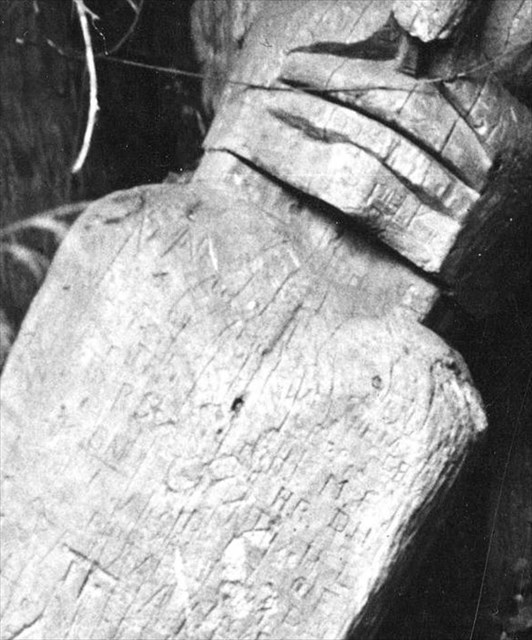
As it was a local aboriginal custom for some people to place the dead in cedar boxes high up in trees, it was not uncommon for park visitors in the early years to be showered with bones from above as the boxes decayed.
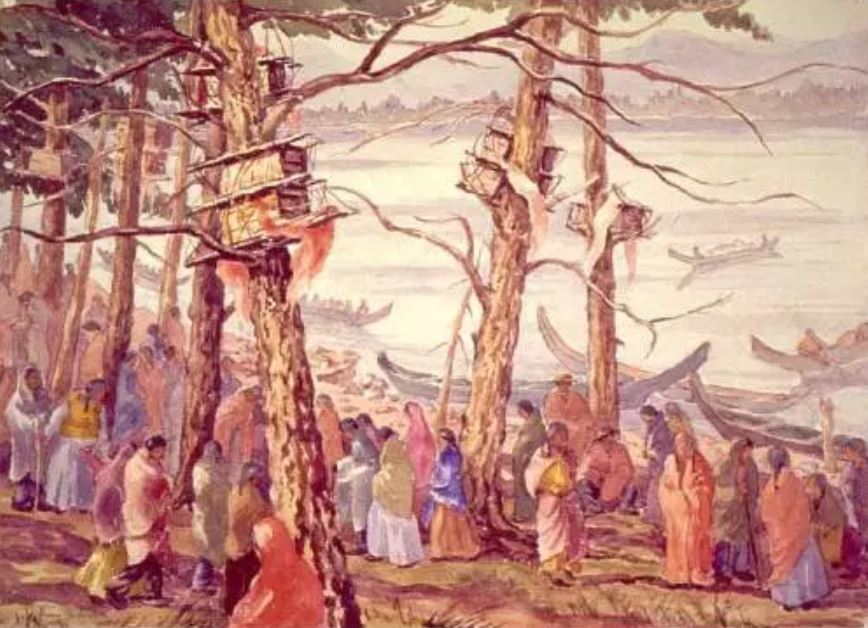
The first totem poles installed by the Park Board were purchased from Alert Bay in 1922. They stood at the site of the original village. Below is a youth group, including servicemen on leave, visiting the totems in 1943.
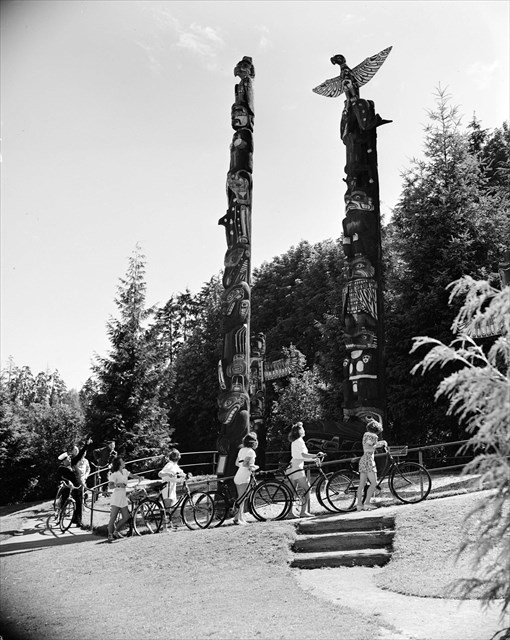
Over the years, additional poles were purchased from areas along the British Columbia coast and in 1960 the totems were moved to their current location at Brockton Point .
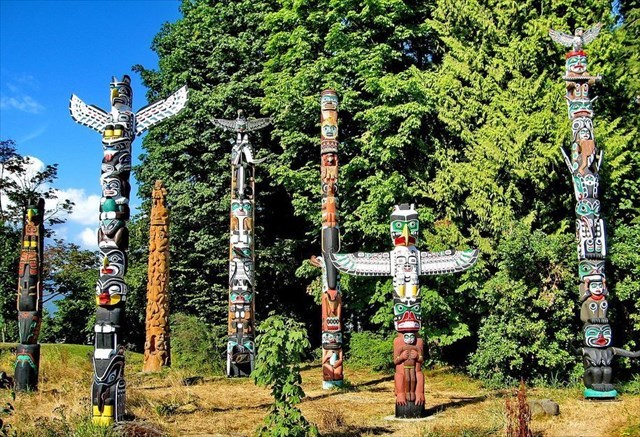
Today there are nine totem poles in total, the latest added in 2009. The Skedans mortuary pole was returned home to Haida Gwaii in the 1980s and the remaining purchases between the 1920s and 1930s were shipped to various museums for preservation. Most of the totem poles today are replicas.
There are many stories in these totems, some of which have been detailed in Pauline Johnson's book "Legends of Vancouver." One such legend is little known has never been in print. But it is said that the story takes place right in the heart of what is now known as Stanley Park.
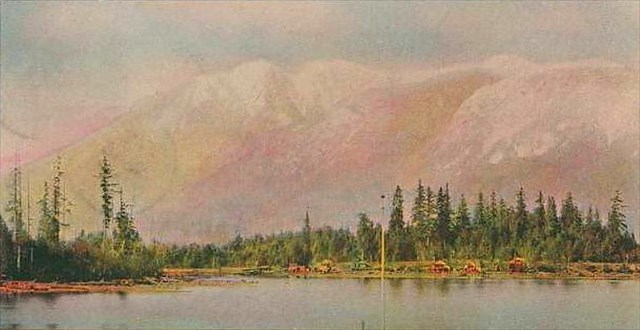
Dead Man's Island, Stanley Park 1899
THE STONE TOTEM
Many years ago there was a bountiful season that brought great wealth to a village. They had triple the supplies to last the lean months, yet they refused to share their food with less-fortunate neighbors. The villagers became fat and lazy -- discarding good food on rubbish heaps while refusing to share half-eaten scraps with the frail and starving.
It was then the Spirit of wind and storm descended on the village. Winter came early and Spring did not arrive. Leaf bearing trees remained bare, the salmon run was absent and the clams were unattainable under a thick layer of ice that stretched as far as the eye could see. Colour was swept away as the world turned white. Snow piled high making travel impossible for hunting. The people began to starve, slowly becoming entombed in their houses by snow and ice.
This time is remembered as the Great Freeze.
A young man, unable to watch the suffering any longer, walked through the storm into the middle of the icy bay and beckoned the Sagalie Tyee. He called for a week and then a month as he turned purple from the cold. But he would not take no for an answer. He demanded an audience with the gods. Although he became extremely ill, he refused to give up.
Above the ice, four giants suddenly appeared paddling a great canoe on a bed of mist. These were the agents of the Sagalie Tyee. With his last breath, the young man implored them to have mercy on the village, for the people learned their lesson. Never again will they hoard. Never will they ignore the starving and weak. He begged them to end the cold. The giants watched as the young man collapsed in a frozen heap.
Although annoyed that this imprudent mortal would wake their sleep, it was custom to reward heroic behavior. After all, the man sacrificed his own life for the welfare of his people. It was then the gods lifted him from the ice and transformed him into a majestic tree on the edge of the village. It was an unusual tree, however. Although seemingly alive, it was as hard as rock, purple in hue and icy to the touch. The profile of a young man was clearly seen forever frozen in the folds of bark.
The planting of this natural totem hearkened a change in seasons. The ice melted from the shores and the fish returned. Clams became plentiful on the warm, tidal sands.
It was around the stone totem the thankful people held a great potlatch. Villages near and far were invited to join in the bounty of the land. Trade between villages blossomed and this brought peace and prosperity for many generations.
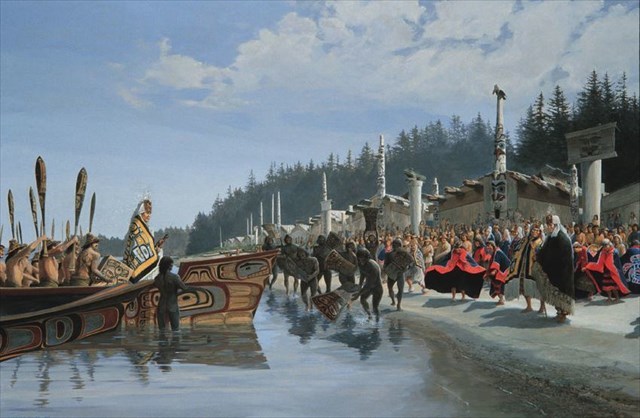
Nobody knows what happened to the stone totem. Some people say it disappeared when the Europeans arrived with great cutting tools. Others say that a bolt of lightning struck it down when greedy White men broke open the earth searching for the yellow mineral.
There is a rumor that the petrified stump still exists. It is hollow and laden with riches. But with most legends there is a warning.
People who trade generously will be rewarded by the gods. They will have a life of wealth and plenty. They will be blessed with generous friends and a healthy family. However, people who hoard will be punished by the Sagalie Tyee. They will be cursed with a heart of ice. They will become poor and friendless, forever yearning for happiness but enveloped in an eternal, cold misery.
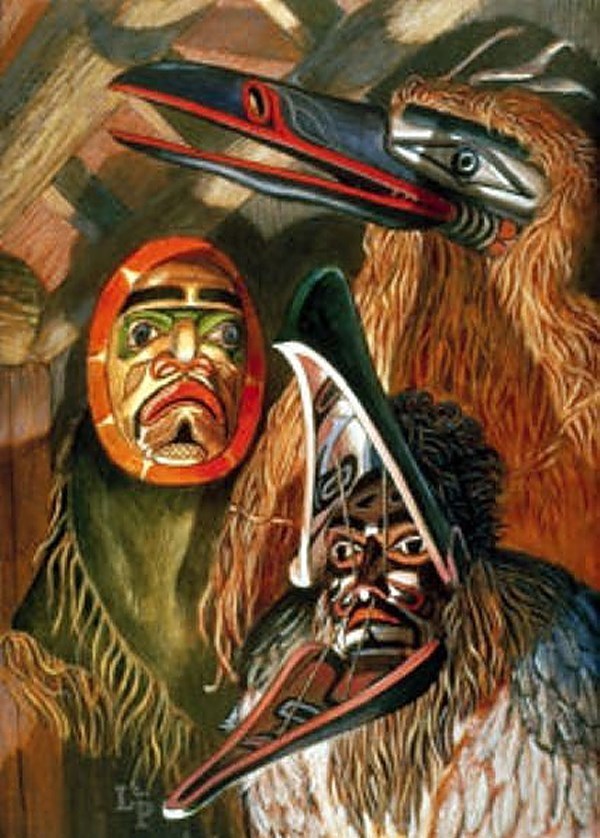
For those who visit, please remember that this is a sacred place dedicated to sacrifice and generosity. Heed the Spirits.
|